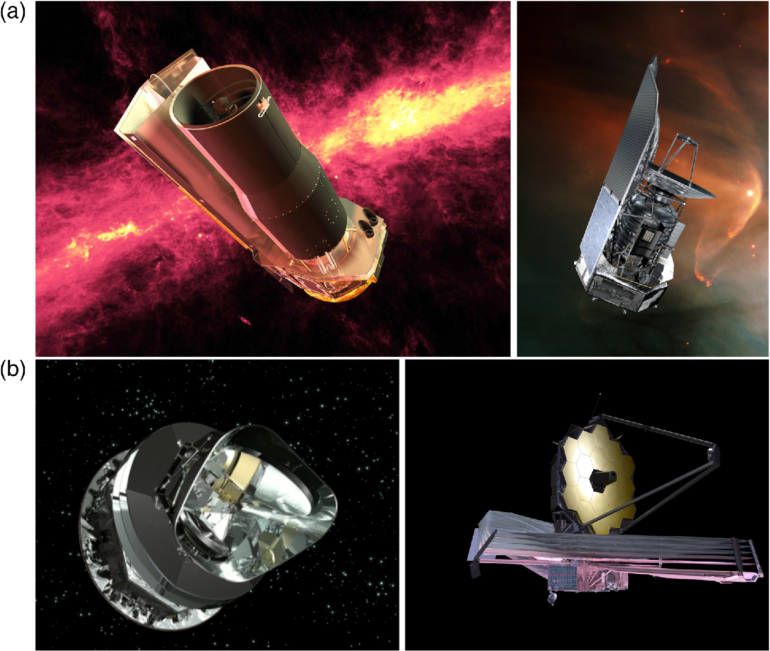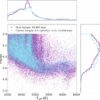To study how stars and planets are born we have to look at star cradles hidden in cool clouds of dust. Far-infrared telescopes are able to pierce through those clouds. Conventionally, niobium nitride bolometers are used as the detectors, despite their low operating temperature of 4 Kelvin (-269° Celsius).
Now Yuner Gan (SRON/RUG), together with a team of scientists at SRON, TU Delft, Chalmers University and RUG, has developed a new type of bolometer, made of magnesium diboride, with an operating temperature of 20 Kelvin or above. This can significantly reduce the cost, complexity, weight and volume of the space instruments.
Conventional, superconducting niobium nitride (NbN) hot electron bolometers (HEBs) are so far the most sensitive heterodyne detectors for high-resolution spectroscopy at far-infrared frequencies. Heterodyne detectors take advantage of a local oscillator to convert a terahertz line into a gigahertz line.
This allows them to measure not only the intensity in great detail but also the frequency. Heterodyne detectors have been successfully applied in balloon and space telescopes and are candidates to serve in future missions. Ground telescopes cannot see far-infrared radiation as it is blocked by the Earth’s atmosphere.
One drawback of such detectors is its bandwidth, that covers a limited spectral line in one measurement. Another restriction comes from the low operating temperature. Cooling down to 4 Kelvin, either by using a vessel with liquid helium or a mechanical pulse tube, is undesirable for a space observatory considering the constraints on mass, volume, electrical power, and cost.
Yuner Gan and her colleagues have now developed a far-infrared HEB detector based on a new superconducting material—magnesium diboride (MgB2)—which has a relatively high critical temperature of 39 Kelvin. This allows them to get a higher operating temperature, at 20 Kelvin or more. They have also demonstrated that the novel HEBs have promising sensitivities and a much increased frequency bandwidth.
The publication in the Journal of Applied Physics was selected for the Special Collection Recognizing Women in Applied Physics.
More information:
Y. Gan et al, Heterodyne performance and characteristics of terahertz MgB2 hot electron bolometers, Journal of Applied Physics (2023). DOI: 10.1063/5.0128791
Provided by
SRON Netherlands Institute for Space Research
Citation:
New type of bolometer detector for far-infrared telescopes (2023, February 17)



